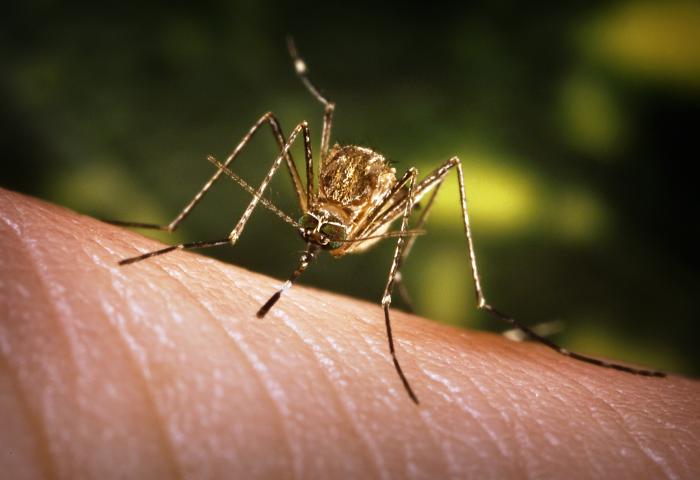Maricopa County and Arizona state health officials are investigating two simultaneous mosquito-borne outbreaks, West Nile virus (WNV) and St. Louis Encephalitis (SLE), and are reminding the community to do its part in preventing the spread of mosquitoes.
“Having outbreaks of these two diseases at the same time has never been reported, and we are working very closely with county Environmental Services, healthcare providers, laboratories, the State Health Department and the Centers for Disease Control and Prevention (CDC) to ensure we have a strong surveillance system and prevention strategies in place,” said Dr. Rebecca Sunenshine, medical director for the Disease Control Division at MCDPH. “We can’t stress enough the importance of avoiding mosquito bites. Apply insect repellent and cover up whenever you are outdoors, and do your part to rid your property of mosquito breeding sites. A little effort can go a long way in protecting the whole community from these mosquito-borne diseases.”

Statewide, there are 46 cases of West Nile (41 in Maricopa County) and 12 cases of SLE (10 in Maricopa County). There are three WNV deaths (two in Maricopa and one in Pima County) and one death in Maricopa County from SLE awaiting CDC confirmation.
Most years, there are only about 20 SLE cases in the U.S., typically in July through September but occasional large urban outbreaks happen every 10-20 years. Last year, no SLE cases were reported in Maricopa County; however, one was reported in Pinal County. The highest year of reported SLE cases was 2003, with five cases confirmed statewide, all from Maricopa County. Usually, there are around 100 WNV cases and zero SLE cases reported each year in Arizona.
MCDPH and ADHS are working with local healthcare providers to remain vigilant in looking for signs and symptoms of mosquito-borne illness and how to test for these diseases. West Nile and SLE share similar symptoms, although only about 20 percent of those infected will develop them. Those that do develop symptoms usually report fever, headache, body aches, and muscle weakness. In less than one percent of infections, both diseases can cause severe illness involving the brain and nervous system. These people, typically over 50 years old, experience severe headache, neck stiffness, and/or encephalitis or inflammation of brain, which can lead to paralysis or death.
“We are advising our health care community that in addition to West Nile virus, to consider SLE in their diagnosis of patients, especially those hospitalized patients who are presenting with a high fever and may be testing negative for West Nile virus,” said Dr. Cara Christ, director of ADHS. “If providers do suspect SLE, please contact your local health department for testing procedures.”
Because there is no commercially available test for SLE, and the rarity of the disease, testing performed by public health laboratories does not always give clear results. The CDC is assisting the Arizona State Public Health Laboratory with their testing strategy for both SLE and West Nile. The CDC is also supporting ADHS and MCDPH to develop an enhanced surveillance system, working with healthcare providers and laboratories around the state and to understand more about these two diseases.
West Nile Virus (WNV) was first isolated in a woman in the West Nile district of Uganda in 1937. In 1999 a WNV circulating in Israel and Tunisia was imported in New York and is now ever present in the US annually.
In 2014, there were more than 2,200 cases in the US, including nearly 100 deaths.
WNV has been detected in dozens of mosquito species.
Up to 80 percent of people who become infected with West Nile virus do not develop any symptoms.
About 20% of people who become infected with WNV will develop West Nile fever. Symptoms include fever, headache, tiredness, and body aches, nausea, vomiting, occasionally with a skin rash (on the trunk of the body) and swollen lymph glands.
Less than 1% of people who are infected will develop a serious neurologic illness such as encephalitis or meningitis (inflammation of the brain or surrounding tissues). Of this number, about 10 percent will die.
St. Louis Encephalitis (SLE) is transmitted from birds to man and other mammals by infected mosquitoes (mainly some Culex species). SLE is found throughout the United States, but most often along the Gulf of Mexico, especially Florida.
Most persons infected with SLEV have no apparent illness. Initial symptoms of those who become ill include fever, headache, nausea, vomiting, and tiredness. Severe neuroinvasive disease (often involving encephalitis, an inflammation of the brain) occurs more commonly in older adults. In rare cases, long-term disability or death can result.
West Nile and SLE are both transmitted through the bite of an infected mosquito. Maricopa County Health officials urge all people to “Fight the Bite” and follow simple precautions to avoid mosquitoes and the diseases they may carry:
- Wear lightweight clothing that covers your arms and legs and use an insect repellent when outdoors when mosquitoes are active. Always follow the directions on the label.
- Make sure doors and windows have tight fitting screens and remain closed.
- Eliminate mosquito-breeding sites around the home by removing standing water in potted plants, tires, bird baths and other containers where water may collect.
- Ensure that swimming pools and decorative water features are properly maintained.
- Change water in flowerpots, birdbaths and pet watering bowls located outdoors at least twice per week.
Many local vector control programs around the state have been treating mosquito breeding habitats and some counties have been fogging to kill the specific mosquitoes that spread WNV and SLE.
13 Diseases You Can Get From Mosquitoes


2 thoughts on “Arizona: Maricopa County investigates outbreaks of West Nile virus and St. Louis Encephalitis, simultaneously”